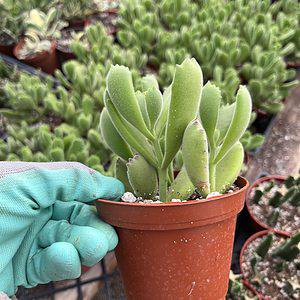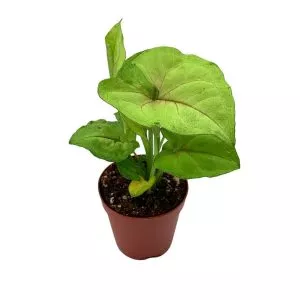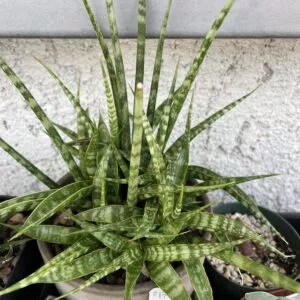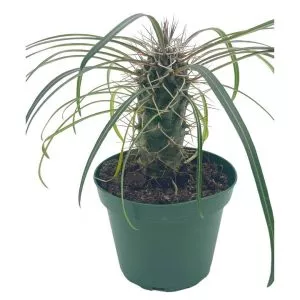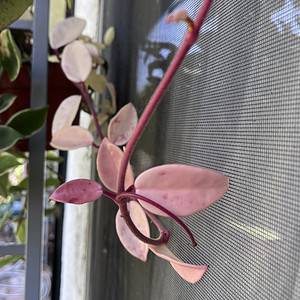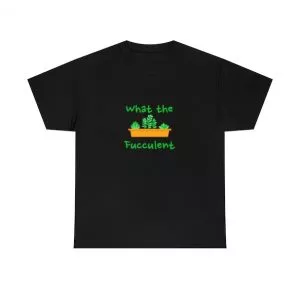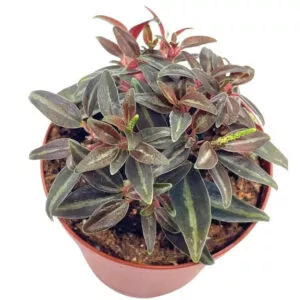No products in the cart.
Table of Contents
Whether drawing inspiration from famed garden designers, cultivating your garden in limited yard space, or exploring various gardening styles, the future promises diverse options.
At Plantly, we focus on gardening trends by paying attention to what plants our customers buy, the engaging stories they share on our social media pages, and the articles they frequently search for. Insights from respected sources like the Pennsylvania Horticultural Society are also highly considered in making this list.
News Flash
Your plant choices, be it tropical, fruit trees, or desert-like, are yours. Considering growth zones is crucial, especially with the new USDA Hardiness Zone map in November 2023, the first update since 2012. The USDA’s Plant Hardiness Zone Map, a gardener’s benchmark, guides plant selection for specific locations.
With the updated map comes the valuable “Tips for Growers” section, sharing insights from USDA ARS research programs, benefiting both gardeners and breeders. Half the nation experiences shifts, allowing experimentation, while the other half maintains stable zones.
Stay informed about location-tailored decisions.
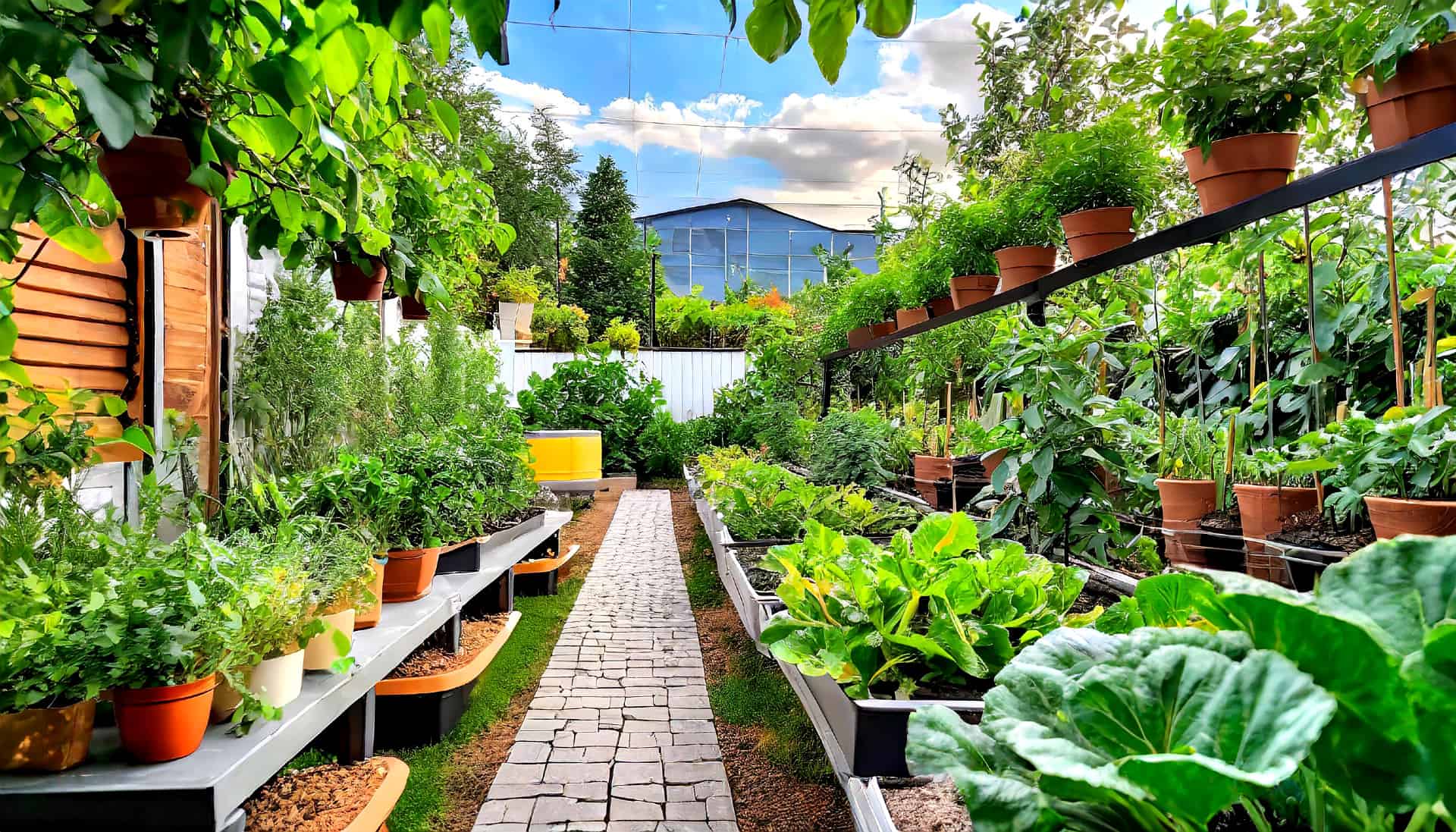
10 Top Gardening Trends in 2024
We’ve identified the top 10 garden trends to help you create a stylish, on-trend garden this year. From edible gardens and tropical plants to pollinator-friendly landscapes, these ten emerging trends offer practical tips and plant suggestions tailored to what today’s gardeners want.
Edimentals Gardening

Edimentals, comprising ornamental and edible plants, is ideal for a garden focused on sustainability and aesthetics. The growing future emphasizes urban gardening for those with limited space, integrating care for ornamental plants to create a jungle or tropical hideout at home. This garden provides food and promotes wellness and aesthetics through ornamental plants.
Edimentals typically encompass perennials, shrubs, and even trees and endure for more than one year. Utilizing sediments offers an excellent means of integrating design elements like color, texture, and form into a conventional vegetable garden.
Frontyard Landscape
Front yard landscaping focuses on creating an inviting, relaxing outdoor space with visual appeal. Fragrant flowering plants like gardenias and peonies add homey beauty, while lush green hedges and grasses give a bold, vibrant look.
More homeowners are choosing to cultivate cottage garden-style plantings with colorful, aromatic blooms that offer an easy-care, whimsical style.
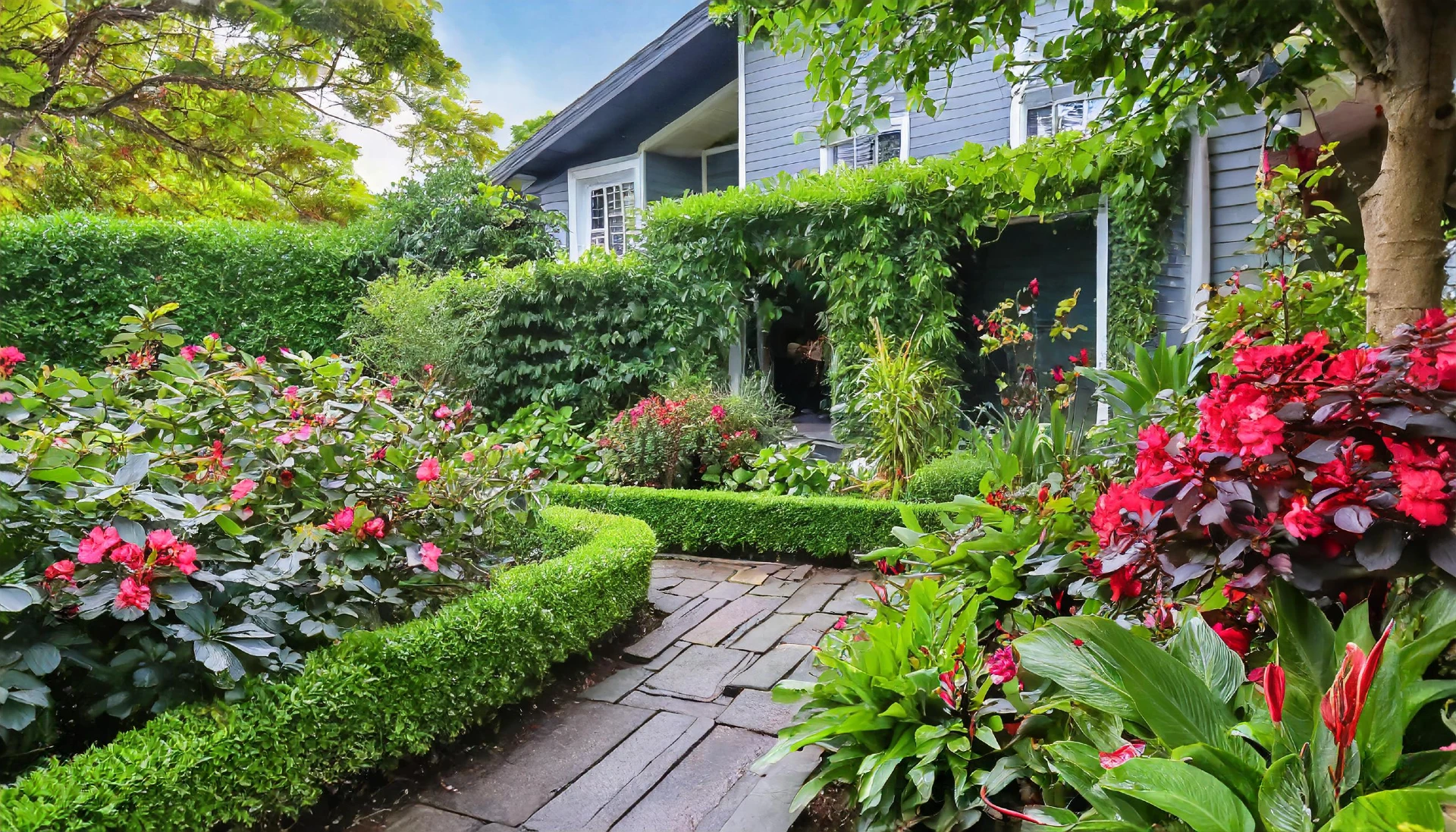
Perennial Movement
The New Perennial Movement is being embraced as a mainstream design in landscaping. Whether intentionally designed or neglected, its form can be derived from nature. This garden style incorporates drift or native plants, grasses, and additional ornamental plants for a natural appearance.
Such gardens are low-maintenance yet simultaneously appealing and sustainable. They provide habitats for native bugs and other native animals, resembling neglected nature with a thoughtful touch.
Sustainable Garden

Sustainable gardening reflects a global commitment to eco-friendly practices. Embracing responsible living, individuals adopt techniques like composting and water conservation to reduce their ecological footprint.
This trend prioritizes creating green spaces that enhance personal well-being and contribute to planetary health by selecting domestic plants, practicing regenerative techniques, and avoiding harmful chemicals.
Moreover, the popularity of sustainable gardening techniques such as rainwater harvesting, drip irrigation, mulching, and composting underscores the growing preference for eco-friendly approaches that conserve water and replenish the soil.
Pollinator Gardens
Planting pollinator gardens involves creating habitats for overwintering insects by refraining from cutting back perennials in the fall. This practice offers shelter and is a vital food source for insects and animals.
Planting pollinator plants stems from a heightened awareness of pollinators’ crucial role in sustaining ecosystems and supporting food production. As global concerns about declining native pollinating bees and butterflies continue to rise, there’s a growing emphasis on creating spaces that specifically cater to their needs.
Wildlife gardens provide a habitat and food source for these essential creatures. By incorporating a variety of nectar-rich flowers, flowering herbs, and local plants, gardeners contribute to the well-being of pollinators, promote biodiversity, and enhance the overall health of their gardens.
This trend reflects a collective effort to address environmental challenges and create landscapes that are not only visually appealing but also actively contribute to the preservation of vital pollinator species.
Low-maintenance Plants
Creating low-maintenance landscapes has become a prominent garden trend, catering to the demands of busy lifestyles and a growing preference for sustainable outdoor spaces. Design experts advocate for incorporating ornamental grasses, which add visual interest and thrive with minimal care.
Many gardeners are drawn to this trend as it accommodates various yard spaces, offering a practical solution for those looking to design their garden without the constant demand for upkeep. The emphasis on drought tolerance and disease-resistant plants is particularly crucial, especially in regions facing extreme summer and winter weather.
As the low-maintenance garden trend aligns with a broader societal shift towards simplicity and efficiency, it allows individuals to enjoy visually appealing gardens without excessive time and effort investments in their garden design endeavors.
For indoor gardeners, succulents add to the tropical plant trends due to their low maintenance and drought-resistance nature, not to mention their attractive foliage, which makes these cute suckers highly sought after. Snake plants, cacti, and other gorgeous succulents are always in any foliage-friendly home.
In stock In stock In stock In stock
Free Shipping
$29.99
Sold By:
Trees Again Nursery
TreesAgain Osage Orange Tree – Maclura pomifera – 3 starter plugs
Sold By:
Trees Again Nursery
$9.99
Sold By:
Cacti and Exotica
Cactiandexotica | Cotyledon tomentosa | Bear Paw
Rated 4.98 out of 5 based on 59 customer ratings01
Sold By:
Cacti and Exotica
$6.99
Sold By:
BubbleBlooms
Syngonium Cream Allusion in 2 inch pot, well rooted live starter house plant
Rated 4.81 out of 5 based on 279 customer ratings00
Sold By:
BubbleBlooms
$12.00
Sold By:
Beauties & Beasts
Cactus Succulent- Sansevieria fernwood -Succulet
Rated 4.83 out of 5 based on 24 customer ratings00
Sold By:
Beauties & Beasts
Drought-tolerant Plants
Cacti and succulents like the famous snake plants are becoming popular as indoor plants due to their exotic, structural foliage and drought-resistant nature, which requires minimal maintenance. With upright arched leaves in yellow and green, snake plants can tolerate low light and infrequent watering.
Sculptural cacti, like the moon cactus and fluffy Old Lady, add visual interest. Their water-storing stems allow them to thrive in dry environments.
Beyond succulents, other great drought-tolerant plants for indoor gardeners include air plants that soak moisture from the air and ornamental grasses like oat grass that add texture. With the right plants that need little watering, indoor gardeners can create a lush oasis without worrying about diligent watering.
Smart Technology Gardens – A Portal to Hortifuturism
Hortifuturism gardening integrates hydroponics, aeroponics, intelligent monitoring, and automation for highly optimized, futuristic gardens filled with vibrant, exotic plants and innovative designs.
Precise control of nutrients, lighting, and misting fosters rapid, abundant growth of rare orchids, carnivorous plants, and delicately patterned foliage. Automated systems enable effortless management while producing eye-catching visual displays reminiscent of botanical utopias.
This cutting-edge, tech-driven approach creates sustainable, automated gardens that capture the imagination with their future vision.
Smart technology gardens represent a gateway into the world of Hortifuturism, where unique, colorful plants are cultivated in elevated, futuristic gardens. Integrating intelligent systems allows anyone to easily care for exotic flora, crafting their nocturnal sanctuary filled with the fantastic plant life of tomorrow.
Container Gardening

Container gardening, cultivating plants in pots and planters, makes gardening accessible for small spaces. The trend is gaining traction as more individuals opt for containers to grow vegetables, herbs, and ornamental plants on patios, balconies, and urban areas.
Experts highlight the versatility and efficiency of container gardening, allowing people with limited space to enjoy the benefits of cultivating their plants.
Herbs and container fruit gardening are the top trends for people with small front yards.
This trend aligns with a growing urban population and a desire for sustainable, space-efficient gardening solutions. Container gardening in 2024 reflects the practical and aesthetic appeal of bringing greenery to constrained living spaces.
Fruit Trees Gardening
Fruit tree gardening involves cultivating fruit-bearing trees for a life-long harvest. Various fruit tree species are planted and maintained at home, ensuring optimal growth conditions.
People, especially in confined spaces with lots of natural light, practically planted oranges or other citrus plants, even berries, in large pots for decorative purposes and food sources simultaneously.
Wildlife & Future Sustainability Tips
Adopting eco-friendly practices becomes paramount in pursuing wildlife conservation and future sustainability. For home gardeners, transforming the front yard into an eco lawn with rain gardens and container fruit plots is a tangible step.
Implementing gardening tips that include thoughtful plant selections enhances the local ecosystem, contributing to biodiversity. Waste reduction initiatives are crucial in sustainable living, particularly minimizing landfill waste. Public gardens set an example by showcasing eco-friendly plantings and inspiring others to follow suit.
Whether managing a small garden, cultivating a vegetable plot, or curating eco-friendly landscapes, these tips empower individuals to contribute to a greener and more sustainable future.
Conclusion
Gardening has evolved to meet the diverse needs of enthusiasts and end users. The focus on eco-friendly planting, backyard biodiversity, and outdoor green space highlights a collective shift towards sustainable and thoughtful home landscaping. Experts suggest that container gardening is gaining momentum, considering the constraints of small gardens or limited garden space.
In response to environmental concerns, many gardeners are embracing several eco-conscious practices, incorporating local plants and intelligent technology to foster a harmonious balance in their front yard or outdoor green havens.
What steps have you taken in line with the 2024 top gardening trends? Let’s hear about your efforts and experience on our Facebook page.
Frequently Asked Questions
Leafy greens like lettuce, spinach, kale, and chard thrive in vertical gardens, as their shallow roots don’t require much depth. Compact vegetables like tomatoes, carrots, radishes, and beans can flourish with proper irrigation and nutrients. Since space is limited, focus on fast-growing crops that maximize yield in a confined vertical setting.
Vertical gardening allows for more efficient use of limited space, as plants can be stacked vertically to increase production per square foot. Gardeners in urban settings or with small yards often utilize vertical gardening to maximize yields within a compact area.
Hortifuturism merges gardening with futuristic tech, aiming to revolutionize agriculture sustainably. It integrates AI, robotics, and advanced farming techniques to address food security and urbanization challenges, fostering resilience and connection with nature in urban spaces.
“Garden trends seeds” refers to popular seeds reflecting current gardening preferences. These may include unique vegetables, pollinator-friendly flowers, compact plants, and medicinal herbs.
Whether you want to buy, sell, or reach out to other plant enthusiasts, Plantly is the right place to be!
-
$19.99Sold By: BubbleBlooms
In stock
Madagascar Palm, Pachypodium Lamerei, in a 4 inch pot, Large Pachy geayi Costantin & Bois
Only 98 available and it’s in 1 people’s basketRated 4.81 out of 5 based on 279 customer ratings00Sold By: BubbleBlooms -
$10.00Sold By: That Wild Yard
In stock
Hoya Carnosa ‘Tricolor’ aka Krimson Queen
Only 1 available and it’s in 1 people’s basketSold By: That Wild Yard -
Free Shipping$22.00 – $23.00Sold By: Grow with Sass
In stock
What the Fucculent comfy unisex Tshirt
Rated 5.00 out of 5 based on 19 customer ratings00Sold By: Grow with Sass -
$6.99Sold By: BubbleBlooms
In stock
Peperomia Metallica, 2 inch, Rare Pep
Rated 4.81 out of 5 based on 279 customer ratings01Sold By: BubbleBlooms

